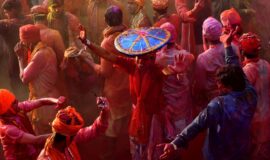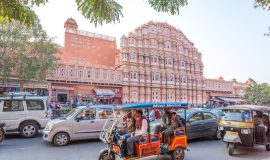Guide And Tips to Shopping in India
Shopping in India Guide and Tips
How to Shop in India
Don’t get carried away and check impulse buying
Shopkeepers will not be offended by haggling and bargaining
Chances are you’ll find it in New Delhi
Know the regional specialties
Getting Drivers and Guides to Help You Shop
Don’t Bargain at Fixed Price Shops
Mastering the Art of Bargaining
How to Deal with Street Hawkers and What to Buy from Them?
What to Buy in India?
Unique Indian jewelry
It’s choices galore when it comes to textiles in India
Indian handicrafts and art
Varieties of Indian tea
Ayurvedic wonders
Try the unique Indian shoes
Traditional Indian spices
Nothing can adorn your living room like an Indian carpet
Mingle with the Artisans in Smaller Towns for Unique Traditional Souvenirs
Don’t Buy Souvenirs Simply for the Sake of Buying
Discounts Aren’t Everything
The Final Word
Shopping in India Guide and Tips
Enter any of the bazaars in India and you will be greeted by a multitude of handicrafts, jewelry, art, textiles, fabrics and spices, enough to dazzle the mind. You’ll feel like you’ve been transported back to a long-gone era. These same items are also on sale in street markets, private shops and state emporiums. You’ll be amazed to find both traditional items and a fusion of traditional handicrafts with a hint of Western influence.
India is a shopper’s paradise and you will be hard-pressed to decide what to buy and what to leave. However, there are certain things that you will find confusing and even overwhelming. The bustling markets with hundreds of people thronging about, and shopkeepers pleading with you at the top of their voices to just give them a try can be a shock to the system. For a foreign tourist visiting India, the entire experience can be quite a rush. We will help you with tips on what to buy and how to make your experience a joyous one.
↳ How to Shop in India
↳ Getting Drivers and Guides to Help You Shop
↳ Don’t Bargain at Fixed Price Shops
↳ Mastering the Art of Bargaining
↳ How to Deal with Street Hawkers and What to Buy from Them
↳ What to Buy in India?
↳ Mingle with the Artisans in Smaller Towns for Unique Traditional Souvenirs
↳ Don’t Buy Souvenirs Just for the Sake of Buying
↳ Discounts Aren’t Everything
↳ The Final Word
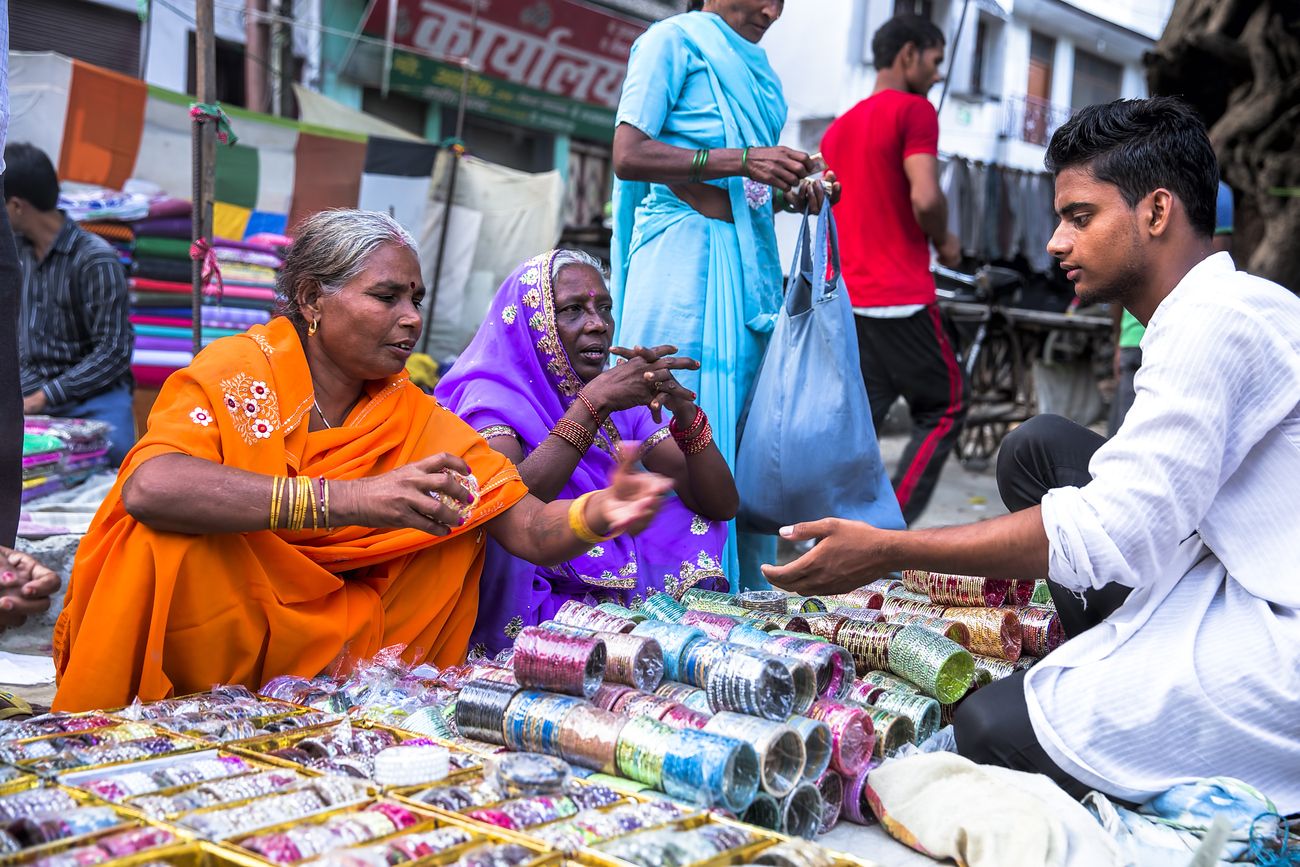
A vendor of jewelry in the bazaar in Deogarh Village sells bangles to a local woman. Deogarh is known for its 17th century Deogarh Palace Hotel, a magnificent heritage structure – Photo by Soumennath
How to Shop in India
Know where to shop
When shopping in India, you can explore the markets, bazaars, emporiums, street vendors, and even malls. For those who love bargaining and have never tried it, yet always wanted to, nothing compares to the festive chaos on the market streets. The state-owned emporiums tend to be marginally more expensive than street stalls and shops but are ideal for those of you who are averse to bargaining. Some state emporiums sell artifacts at a fixed price. Let’s explore shopping in India in a bit more detail, beginning with buying on the streets.

The Mallick Ghat Flower Market in Kolkata is the largest flower market in India and has been running every morning for the last 165 years. Located near the iconic Howrah Bridge, it is a vibrant extravaganza of color and vitality – Photo by Mrinal Nag
Don’t get carried away and check impulse buying
The shimmer and glitter of the markets will cast its spell on you, but as you explore the markets, you’ll realize that the same items are sold elsewhere too. So, it is vital that you don’t buy the first thing you lay your eyes on. Check out the prices first and compare it with other vendors. Quality should be a priority, so examine the products closely. You don’t want something that will not last you more than a week.
What if you fall in love with an item? There’s no doubt that this will happen with a lot of items during your shopping escapades in India, but that doesn’t mean you should fall prey to every impulse. You’ll find other shops selling exactly the same thing. If not, you can always come back to the store where you saw it first.
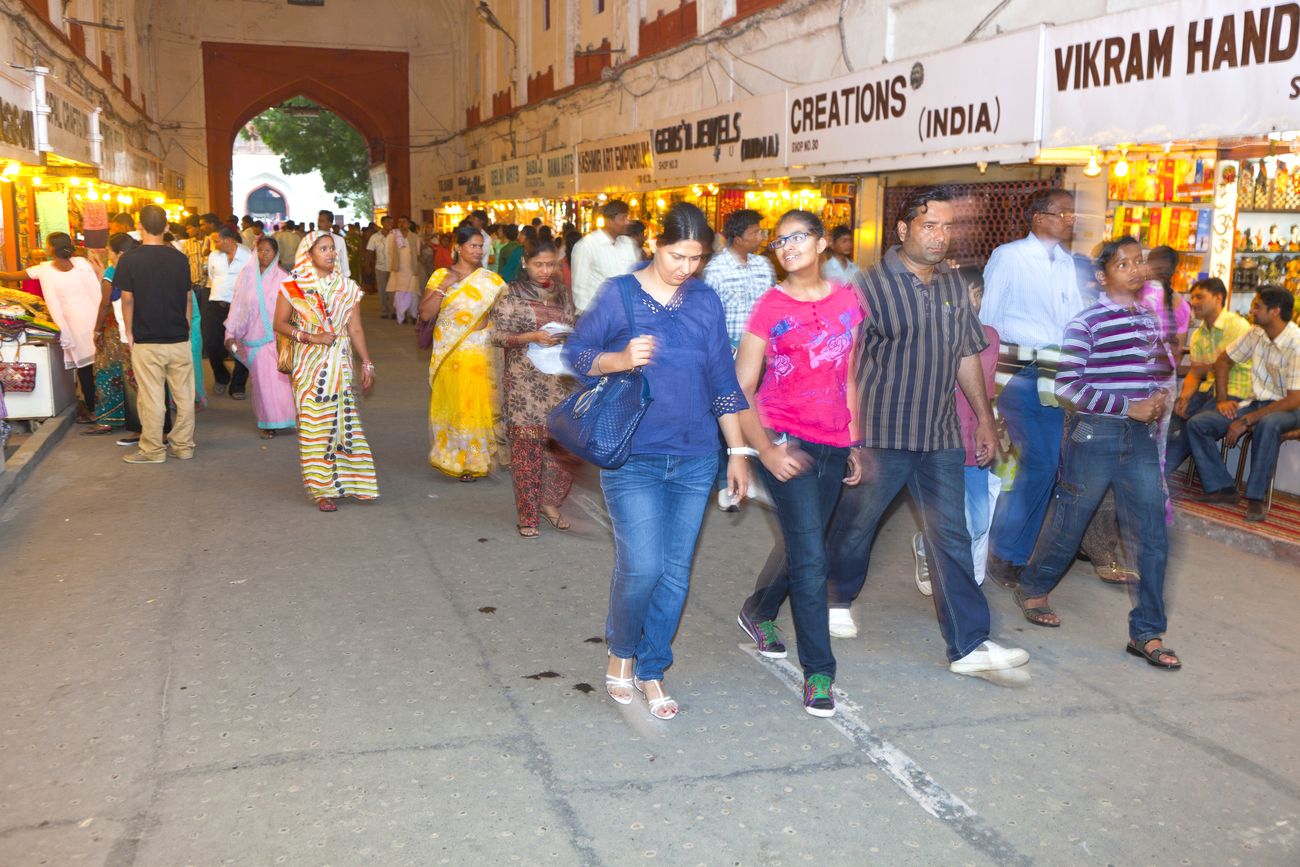
Shoppers walk through the Meena Bazaar in the Red Fort in Delhi, India. Known as the first covered market in the country, it was built by Shah Jahan three centuries ago, when it sold mostly luxury items for the royals – Photo by travelview
Shopkeepers will not be offended by haggling and bargaining
Haggling and bargaining are part of the fun of shopping in India, so if you’re worried whether you are going to end up offending the vendor, you are mistaken. That’s how business is done in India. Set your own budget and don’t go beyond it. Never shy away from simply walking away if the price seems a little too steep. The chances are good that the shopkeeper will call you back with a revised price. Ideally, you should offer one-third of the asking price and settle for no more than half of it. Be aware that bargaining varies from shop to shop. Stay calm and relax; shopping in India takes time.

A young sales lady showing piece of textile in a shop in Jaipur – Photo by Xavier Arnau
Chances are you’ll find it in New Delhi
It’s likely that you’ll start and end your tour in New Delhi. So, if you regret not having bought something you fell in love with during your trip, chances are good that you’ll find it in New Delhi. This will also save you the pain of carrying your purchases during the entire trip. You’ll find state emporiums near Connaught Place that sell most of the artifacts you find elsewhere India. Of course, there are going to be a few things that you’ll not find in these emporiums. So, the best thing to do is explore the emporiums as you arrive in Delhi. This will give you a fair idea whether to buy something regionally or wait for the emporiums when you return to Delhi.
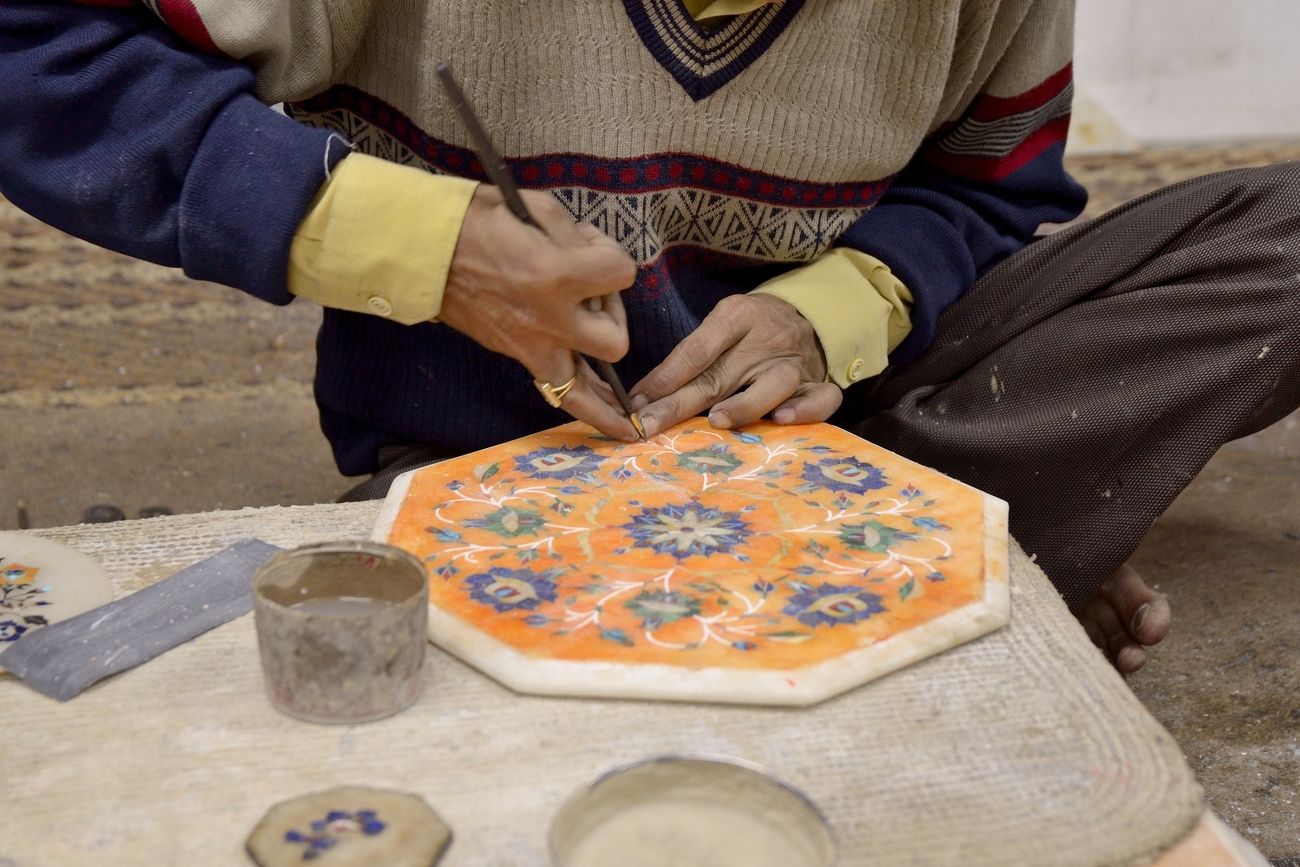
A skilled craftsman plying his craft of inlaid marble in his workshop. It is done with semi-precious stones like lapis lazuli, mother of pearl, petunia etc. This marble art came into existence at the time of the construction of the Taj Mahal in the 17th century. Since then, generations of the same family continued the art, and it still exists today. Today it is used for coasters, tables, marble wall decorations and many other small souvenirs – Photo by jcfmorata
Know the regional specialties
India is huge and the culture differs from region to region, including the way people dress and design jewelry. Even the fabrics, artistry, and regional produce differ. For instance, Darjeeling is famous for tea, Rajasthan for textiles, miniature paintings and silver & precious stone ornaments, while Mysore is famous for sandalwood products. These regional specialties are best bought in their place of origin. For instance, if you choose to buy silver ornaments in Rajasthan, you can purchase it directly from the silversmith. This means you can give your own input and design a piece of jewel that’s completely unique, while retaining its cultural essence.
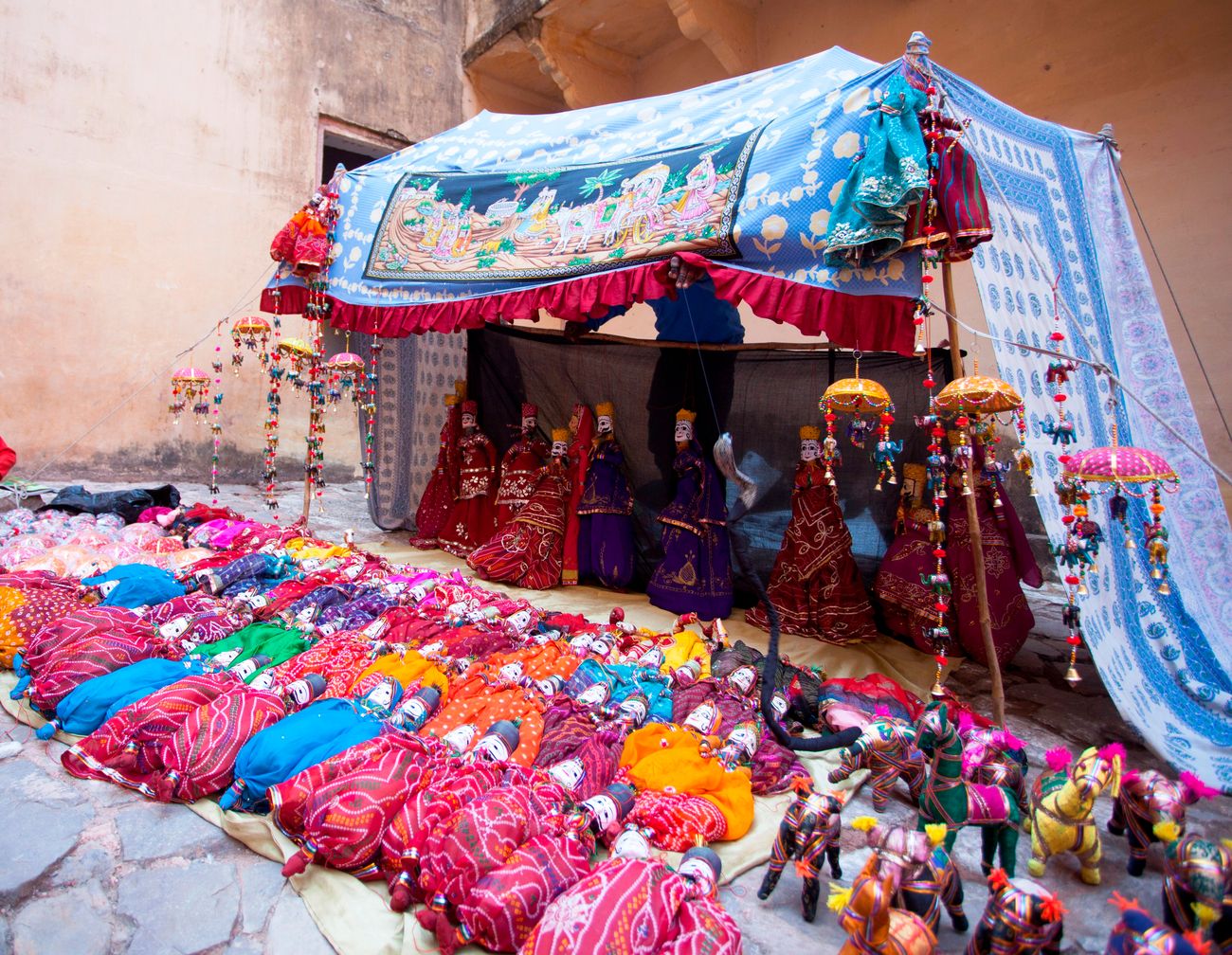
Members of a puppet show sell their colorful traditional puppets in Jaipur, Rajasthan. String puppets are native to Rajasthan and are controlled by a single string from the puppet’s head – Photo by DC Lenses
Getting Drivers and Guides to Help You Shop
Tourists who have been to India will tell you to steer away from shops recommended by drivers and guides. The reason behind this is simple – they usually get a small commission from the shopkeeper, which comes out of your pocket. This is a practice followed all over the world, and India isn’t unique in this respect. On the other hand, you are likely to be taken to a reliable shop that brings you quality items at reasonable prices. The important thing is to buy an item that lasts. After all, it’s these souvenirs that are going to remind you of your adventures in India. Still, do not forget to bargain even in those shops recommended by your guide or driver.

A woman from the rural areas in West Bengal paints a T-shirt at the State Handicraft Expo in Kolkata, the largest craft festival in Asia – Photo by Arindambanerjee
Don’t Bargain at Fixed Price Shops
Spotting a fixed price shop is not hard. These shops clearly display this fact and mention the prices. These prices are your point of reference with other stores that don’t have fixed prices. Prepacked items like bottled water, cosmetics, branded items, packed food and electronics like camera batteries, digital cards are normally sold at fixed prices. These prices are inclusive of tax, so the price tag tells you exactly how much you need to shell out for them. Unless the shop advertises a discount, it is rare that a shopkeeper will sell anything below the printed “maximum selling price” or MRP.

A woman haggling before buying a handmade woven basked at the crowded market of Orchha, Madhya Pradesh. Orchha is famous for its ancient palaces and is often visited by western tourists -Photo by Jeremy Richards
Mastering the Art of Bargaining
As we mentioned earlier, bargaining is a part of doing business in India, a skill that most Indians learn at a very young age. What seem like heated discussions around you in the market are nothing other than people bargaining. If you are averse to bargaining, you’ll simply have to shell out an inflated price for every little thing you buy. Watch how people bargain around you and learn from them; it’s not going to be difficult. Here are a few tips to assist you.Bargaining is not arguing or being rude: Raising your voice, being unpleasant or using the wrong language is not bargaining. You might end up offending the shopkeeper who may ask you to leave. Using the words “please” a couple of times in a pleasant manner will cause a change of heart and you will most likely get what you are looking for at the price that you want to pay.
Don’t fall into the guilt trap: If the shopkeeper offers you refreshments the moment you set foot in the shop, politely refuse, even if he is insistent. Accepting such hospitality might impede you from leaving if you are not interested in the merchandise. The shopkeeper might be trying to trick you into buying. However, keep in mind that not all instances are the same. If you are in a sari showroom with literally hundreds of saris on display, feel free to accept refreshments. The chances are good that you will find what you are looking for in such shops.
Personal stories need not move you: If the vendor says he has mouths to feed and that business is slow, understand that he is trying to make you feel guilty and pay more. The fact that you are bringing him revenue by buying from him is good enough. Falling prey to such pleads will simply encourage the vendor to use it as an unethical tool for price negotiation with other tourists like you.
Walk away if you feel the price is grossly unfair: If the shopkeeper is not showing signs of going down in price, politely say thank you and move away. The shopkeeper, most likely, will come out and call you back for further negotiations. This strategy works especially well when the same product is being sold by other shops in the vicinity.If you are using plastic money, mention it beforehand: If you are using a card to pay, don’t pay any amount above the product price. Credit cards are widely accepted in shops and emporiums in India. The credit card companies and banks in India charge the sellers 1-2% as transaction charges. While shopping in private or state emporiums, please keep in mind that these charges are included in the product price. So don’t pay any extra amount over and above the agreed price of the product. If a shopkeeper insists on 1-3% extra at the time of payment, simply tell him or her that you are not going to pay any extra amount over and above the agreed price.Set a maximum price that you’re willing to shell out: Have an upper limit of what you are willing to pay and stick to it. This makes bargaining easy. Failing this, you will empty your pockets before you realize it.
Be reasonable with what you offer: Quoting unreasonably low prices will simply put off the vendor and end any possible discussions. So, be reasonable and know that what you’re buying has value even though it is less than what the seller is asking.
Shop early in the day or late in the evening: Indian shopkeepers believe that the first customer of the day should not go empty handed. This is considered a bad omen for the day’s business. So, the shopkeeper will be willing to go down considerably on the price as long as he has some margin on the product. You might also get a bargain at the end of the day as the shopkeeper will be looking to close the deal quickly and shut up shop.
Observe the neighboring shops as you bargain: The chances are good that a neighboring shopkeeper is eyeing you as you bargain. Look around for such shop-owners; they already know you are a hard nut to crack and will likely give you a good deal.
Look around before you buy: Like we mentioned earlier, look around to check out whether other shops sell the same item. Buying something the moment you lay your eyes on it is a bad idea. Take time to determine the real price first by looking around.
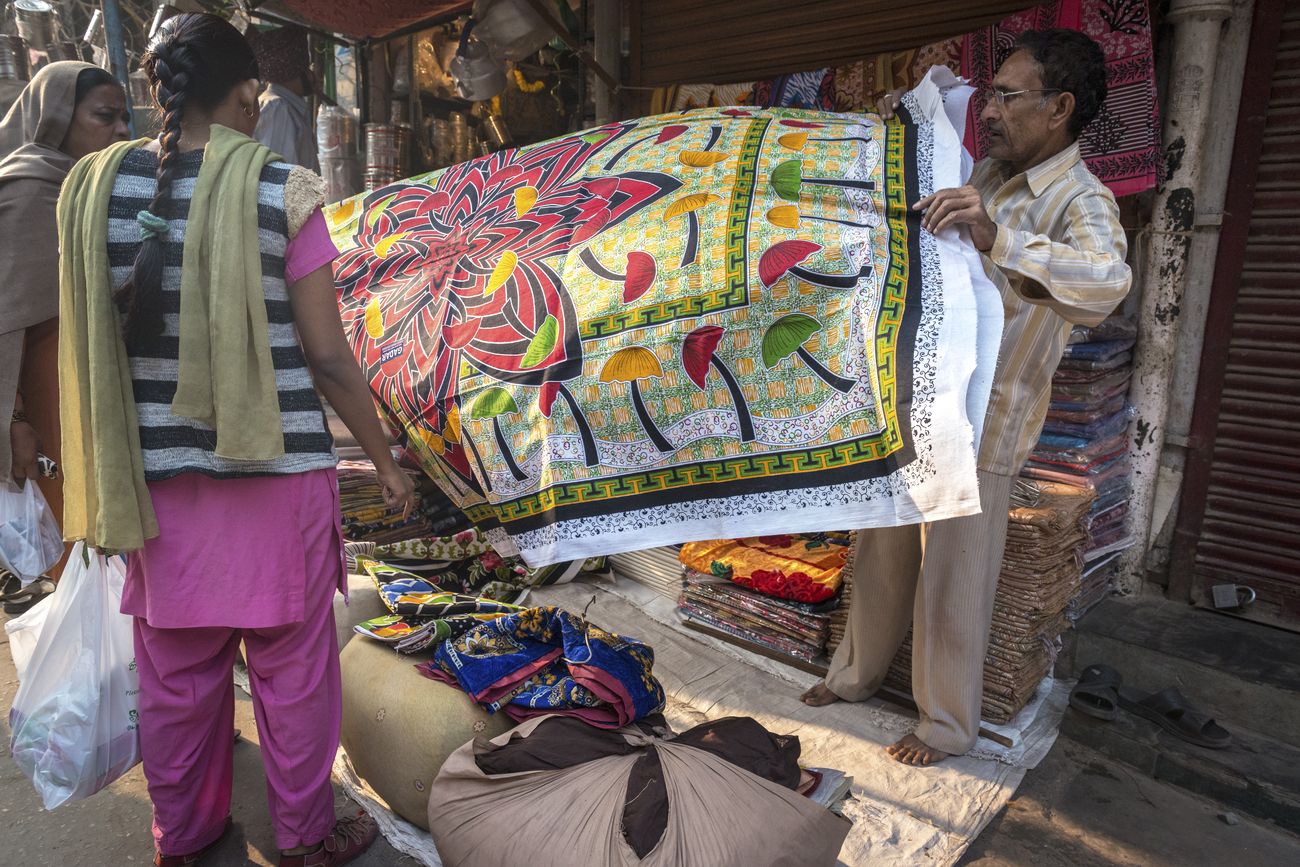
Some of the best bargains can be found at street stalls. Here a customer is considering buying a painted table cloth from a street vendor in New Delhi -Photo by Marek Lipka-Kadaj
How to Deal with Street Hawkers and What to Buy from Them?
You will find a lot of men, women and even children selling small artifacts or postcards at famous tourist attractions, especially in North India. Some of them might even follow you and beg you to buy from them. If you are not interested, the rule of thumb is simply to walk away without responding. A polite no or a smile can be perceived as a signal of interest and they may continue to follow you.Tip: There’s no doubt that street hawkers can sometimes be quite annoying and must be dealt with firmly. However, it’s not a bad idea to take a passing glance at what they sell. Although the souvenirs they sell are hardly unique, they can be quite cheap. A miniature monument, post card, keychain, camel bone items, soapstone coasters, camel leather items, and peacock items can be bought at throw-away prices. But don’t forget to bargain!
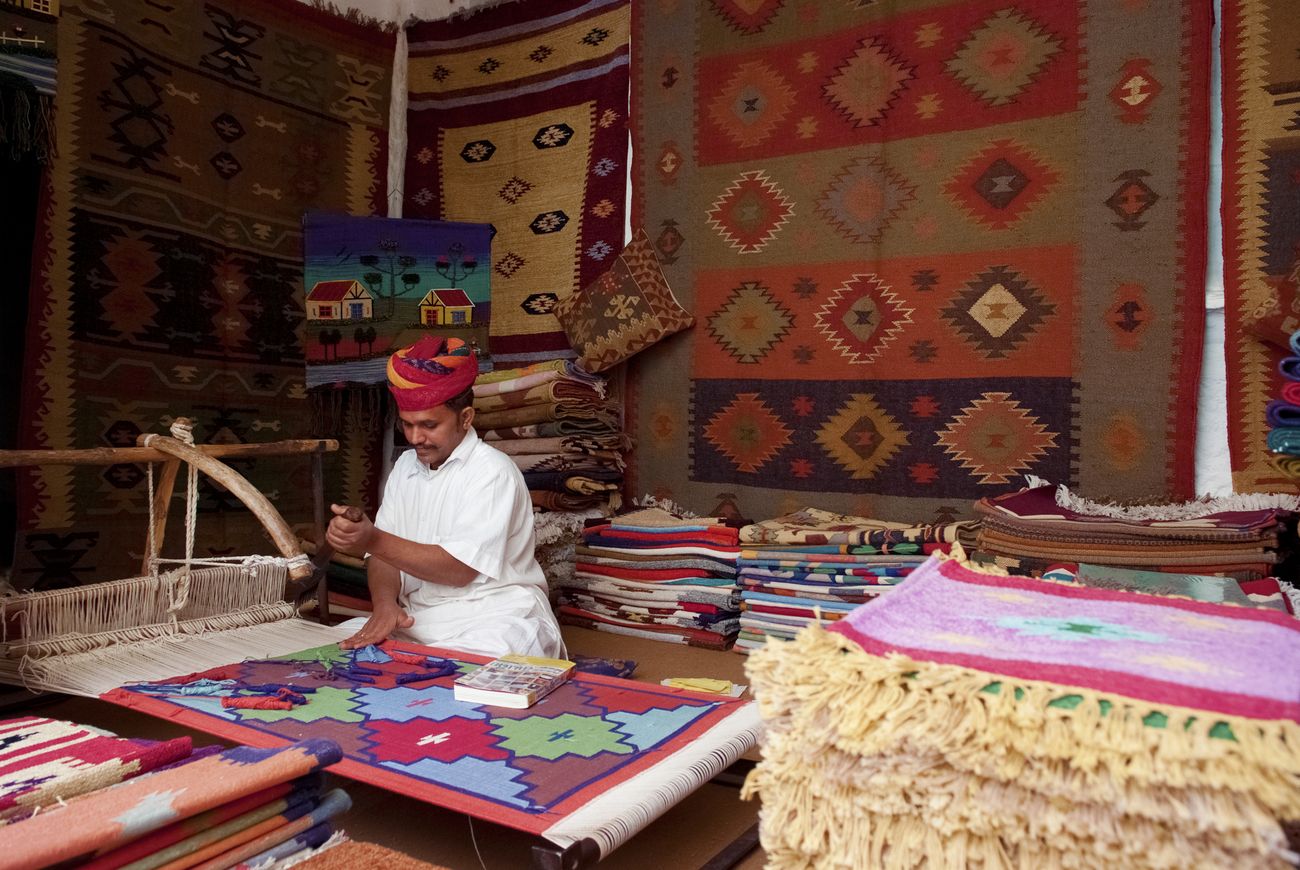
Many weavers still use a handloom, like this carpet weaver in Jodhpur. Nearly 15% of cloths are still produced this way in India – Photo by Gnomeandi
What to Buy in India?
You may be buying a souvenir as a showpiece or something that you use every day. Whatever the case, you must not end up buying something that isn’t actually unique to India. Also, you should not buy something that is not produced in that specific region. For instance, you don’t want to end up buying tea leaves in Rajasthan when it is the specialty of Nilgiris and Darjeeling. On the other hand, there are items that are available throughout the country, albeit in different textures and designs, like textiles and traditional jewelry. Let’s explore some of the unique must-haves!
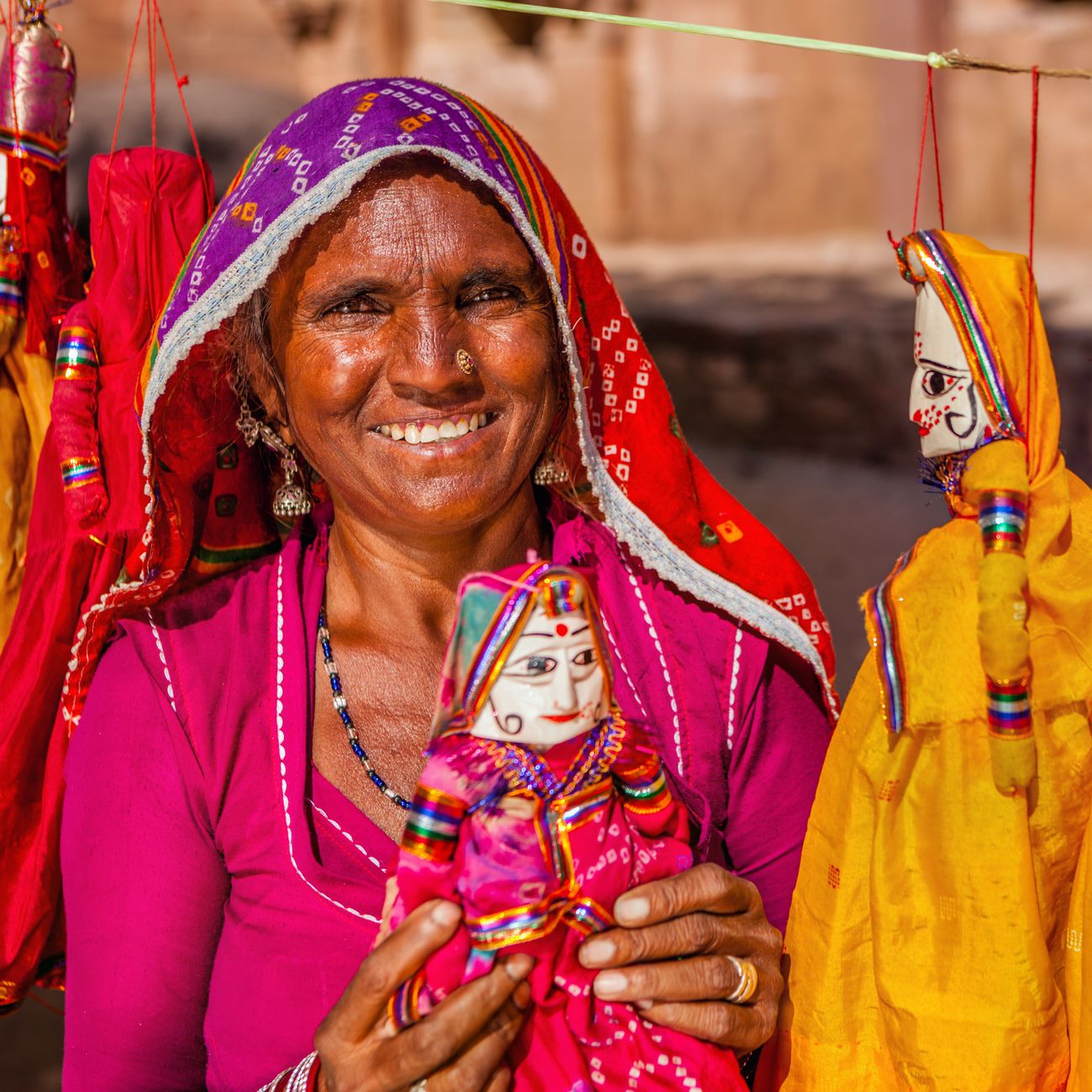
The art of puppet theater in India dates back thousands of years and is the most popular type of entertainment, especially in Rajasthan where it is mostly performed by a troupe of agricultural laborers. These marionettes stand around 0,6m/2ft high with a wooden head and prominently painted eyes. The body is stuffed with rags to allow free movement and the dolls are dressed in colorful fabric – Photo by hadynyah
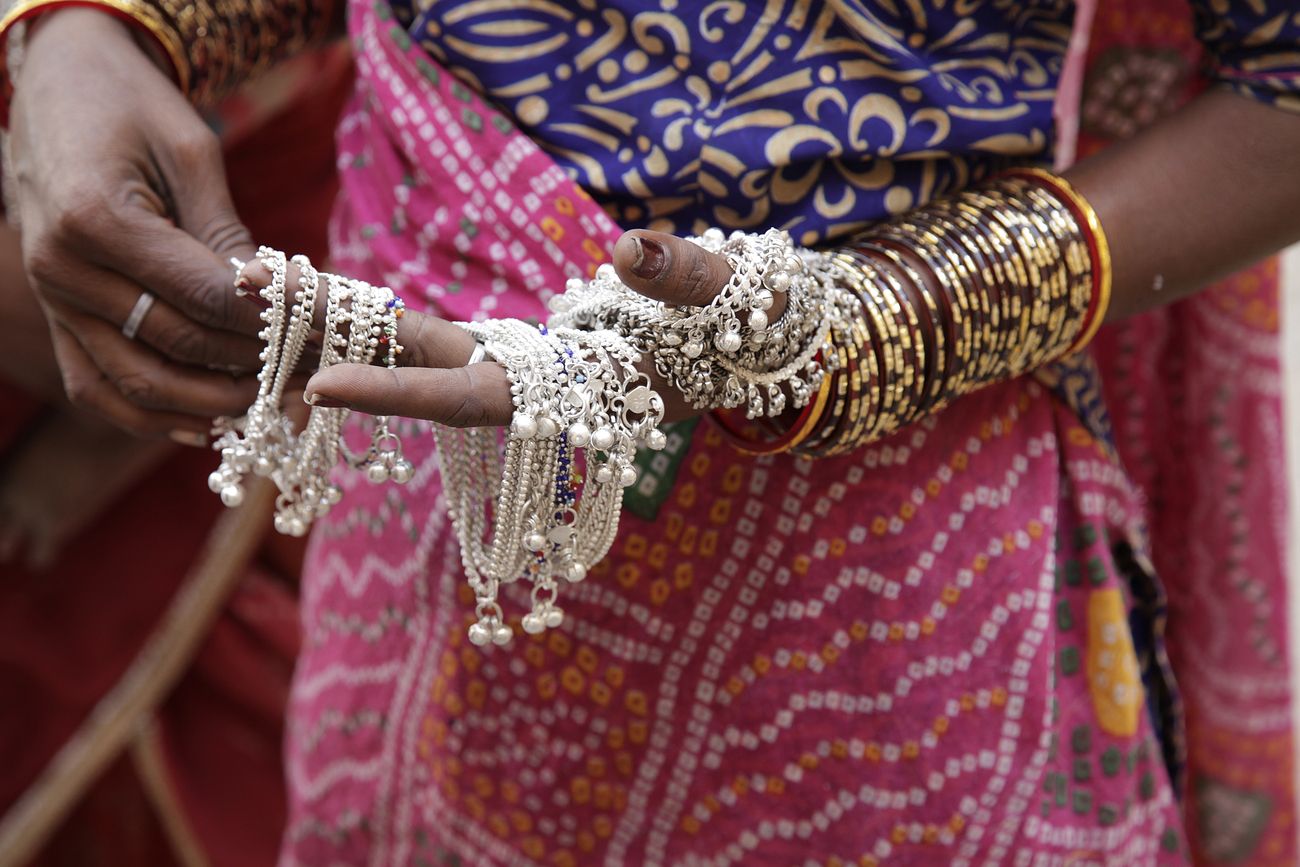
A woman selling traditional imitation silver trinkets in a street in Delhi – photo by Dirk Ott
Unique Indian jewelry
You can easily recognize Indian jewelry by the way it looks, but telling which part of India it comes from may be quite a challenge. Gold is the preferred precious metal in almost all of India with the exception of Rajasthan where silver is more popular. The domestic flare for gold is what makes India the largest importer of this precious metal in the world. You will find these jewels studded with semi-precious stones like emerald, turquoise, amethyst, amber, sapphire and ruby. Jaipur in Rajasthan is the major tourist attraction in North India and at the same time also the biggest center in India for the cutting and polishing of precious and semi-precious stones.
If you’re being offered “expensive” jewelry at a fraction of its cost, simply dismiss it; it’s a fake. Such jewelry is nothing but finely cut glass. However, if you are not really looking for value and are simply going for the look, you need not worry about the authenticity. Imitation jewelry is available all over. The point is that you must know that you are buying imitation jewelry and not mistake it for the real thing.
Tip: Authentic gold jewelry is usually hallmarked. When purchasing any silver or gold jewelry, precious or semi-precious stones, loose precious stones or stones embedded in jewellery, ensure that you get a valid certificate mentioning the carat and weight along with the name of the shop.
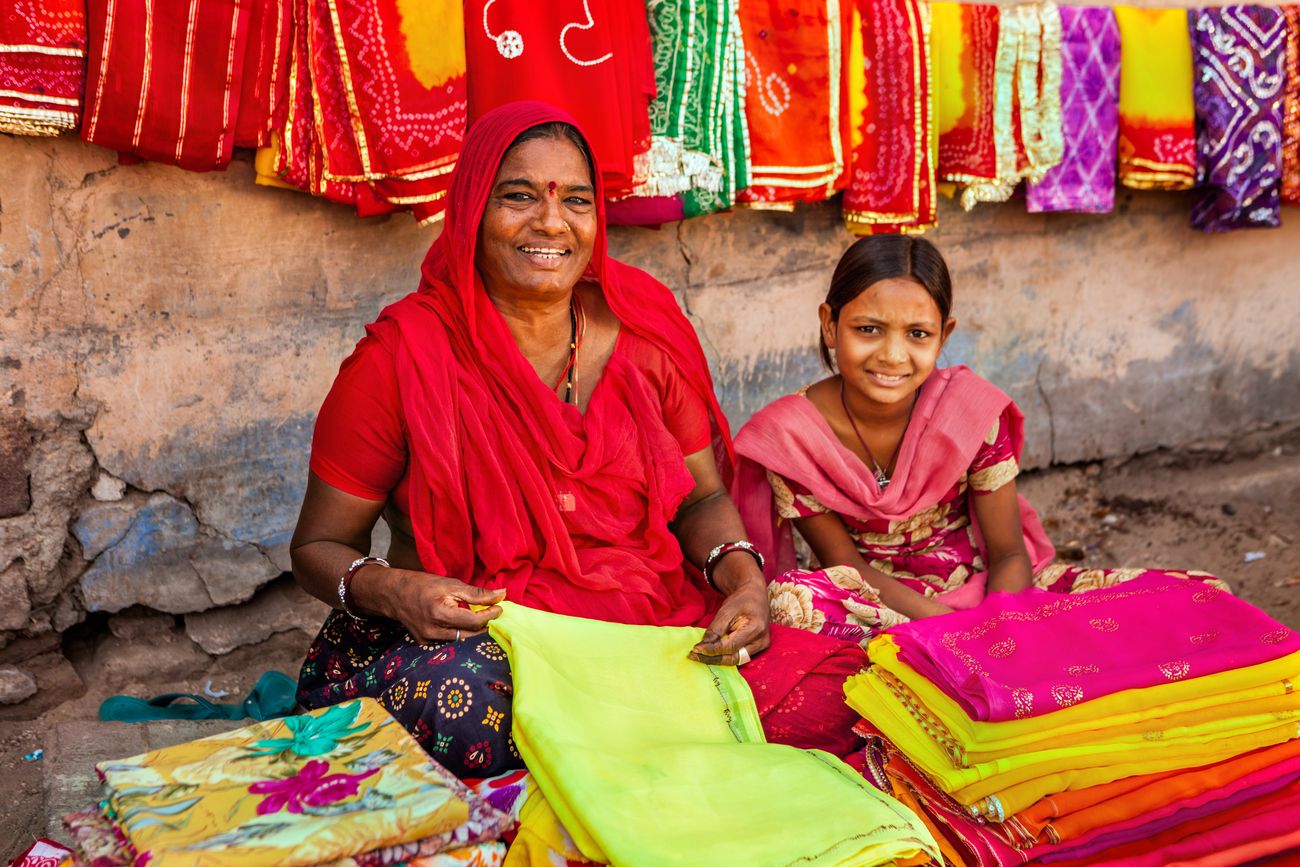
A street vendor and her daughter smile at the camera. They are selling colorful fabrics on a street in Rajasthan – Photo by Bartosz Hadyniak
It’s choices galore when it comes to textiles in India
Saris: If you are a woman, then a sari is a must buy. The most vibrant ones are made of silk, while you also get ones made of cotton. Enter an exclusive sari showroom and you’ll be amazed at the choice; they number in the thousands. The most expensive ones are inlaid with fine gold thread while others are studded with glass, beads and stones.
Handloom fabric items: Garments made of handloom woven fabrics look elegant on both men and women. The fabrics are hand woven, or block printed and by purchasing these, you will be contributing to small home industries and the local economy. You can buy kurtas (ladies tops), bedsheets, and even decorative wall hangings to adorn your walls.
Pashmina and other shawls: Pashmina is a kind of cashmere that is made from the hair of Pashmina goats that are found near the Himalayas. The traditional designs and smooth texture of these shawls make them perfect to be worn with almost anything. You can also choose among shawls made of wool, silk, and cotton.
Tailored for a custom fit garment: Having a garment tailor-made is fairly inexpensive and often offered free of cost, depending on the monetary value of your purchase. This is especially true when buying textiles in Agra, Jaipur, Jodhpur, and Udaipur. Once the tailor takes your measurements, the attire is quickly prepared overnight and delivered to you the very next morning before you check out of your hotel. However, there are a few important points to note regarding this. Do not forget to take the visiting card of the shop before leaving it. In case the delivery of your custom-designed clothes is delayed, bring it under your driver or guide’s attention, or inform your Vacation India advisor so that we can help you get it.

A weaver uses a large wooden handloom to weave the bright pink fabric for a sari – Photo by Pius Lee
Indian handicrafts and art
The variety of choices when it comes to handicrafts and art can be overwhelming. These items are region-specific and intricately hand-designed, using traditional tools. Needless to say, no two items will therefore be exactly the same. This also means that a lot of labor and time go into creating them. So, determine the value of the item before you set out for a hard bargaining session and pay the craftsmen what they deserve.
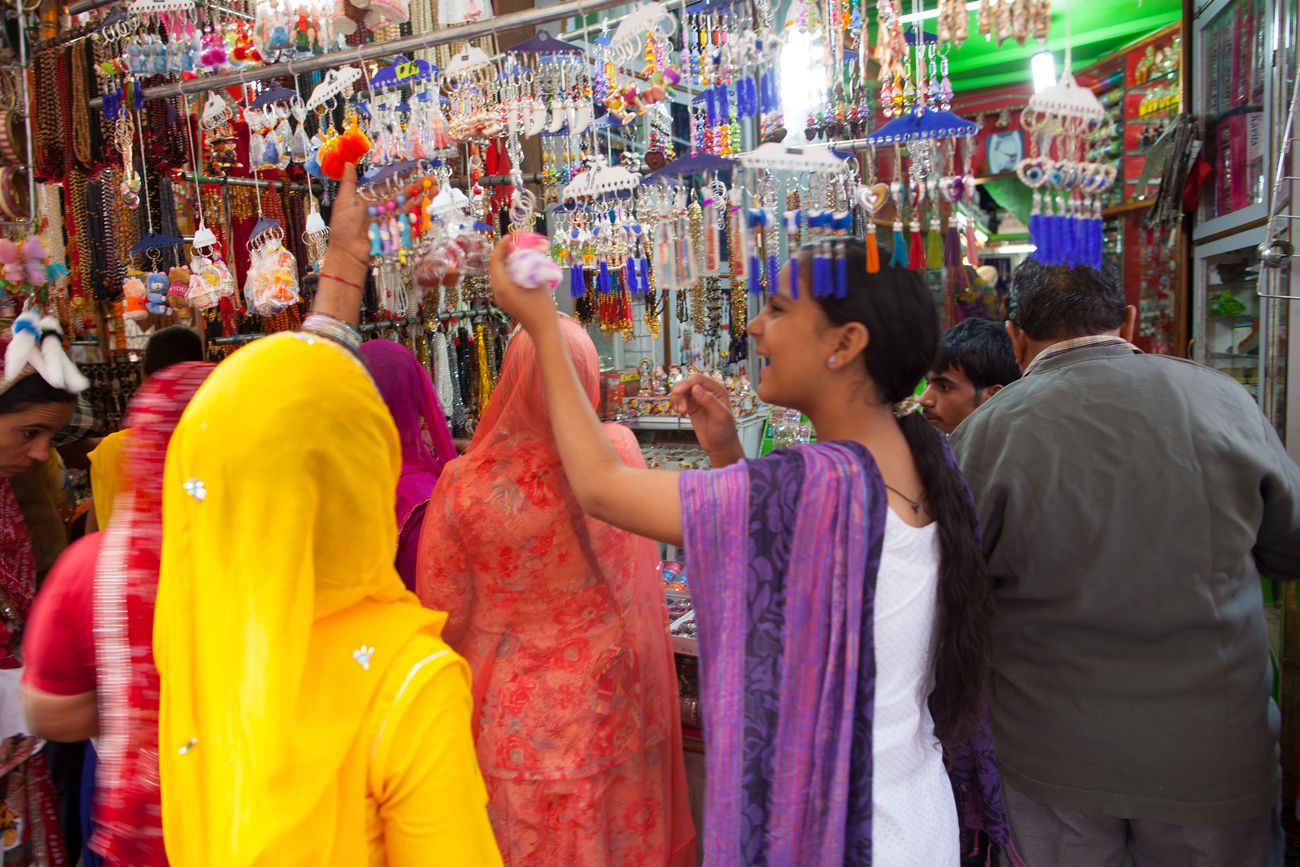
Thousands of visitors attend the Pushkar Camel Fair every year. Here Rajasthani ladies admire some of the souvenirs on sale during the fair – Photo by BDPhoto
Varieties of Indian tea
Darjeeling, Assam and Nilgiris (Thekkady and Munnar) are famous for their tea plantations. If you are visiting these areas, don’t miss out on purchasing some fresh tea leaves. You’ll love the flavors.
Incense and natural perfumes
Indians are almost obsessed with scented items with a lot of religious rituals demanding their presence. You’ll love the incense sticks made of sandalwood in Mysore. Try attar or natural perfumes that are extracted from tree bark, spices, and flowers.

The art of block printing on fabrics has been passed down from generation to generation and the traditional recipes for the plant dyes are a well-kept secret. The art originated in Bagru, but has spread to other regions of Rajasthan in the last decades. This kind of block printing uses hand carved wooden blocks and the colors depend on the skill of the artisan and the quality of the plants used for the dyes – Photo by Alexandra Morrall
Ayurvedic wonders
Ayurveda is the ancient natural science of medicine and healthy living in India. Today, you find several branded natural Ayurvedic products and home remedies that are devoid of any chemicals or side effects. Try a simple face wash, soap or any Ayurvedic toothpaste; you’ll love the after-feel. Some famous brands for Ayurvedic products are Himalaya, Patanjali, Nirogam and Dabur.
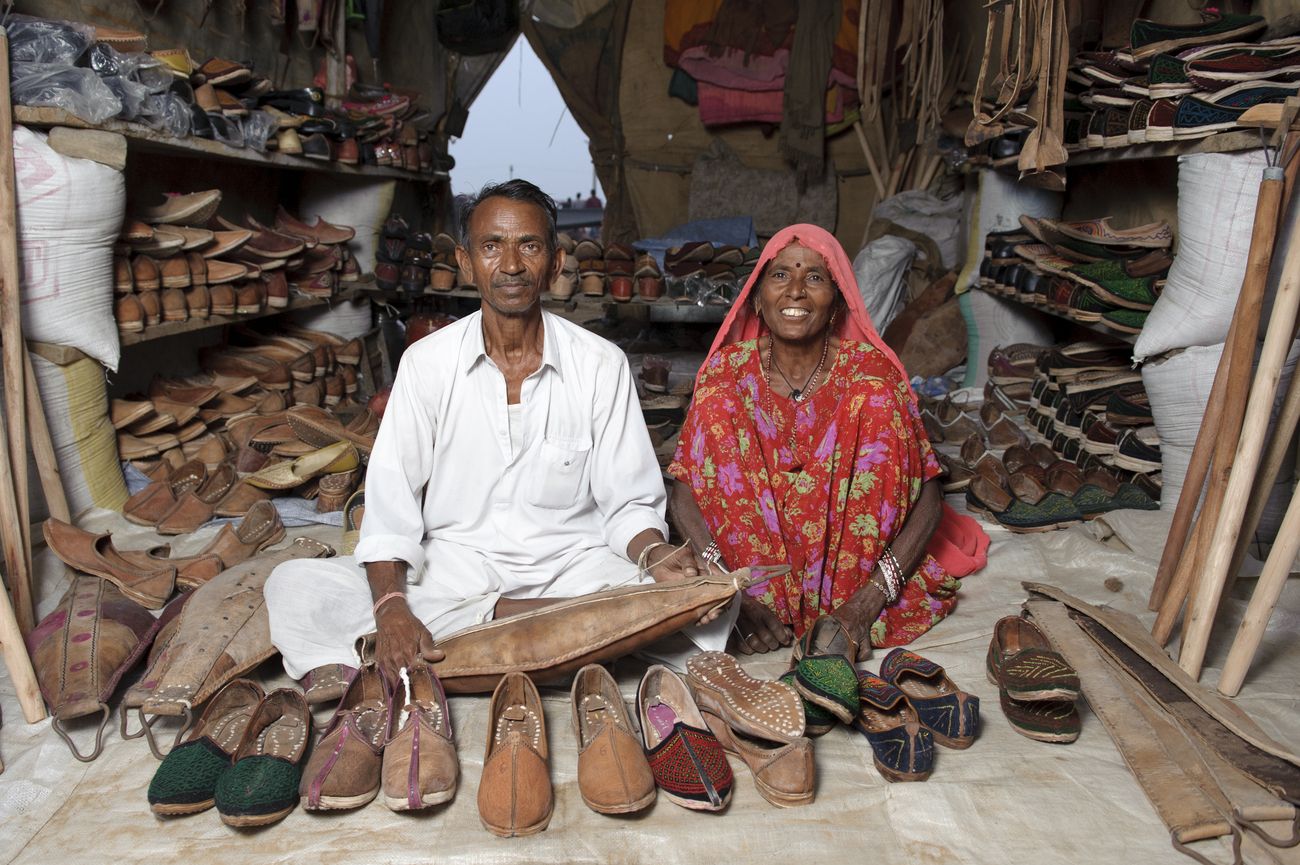
A cobbler and his wife selling handmade leather shoes in the old part of Agra – Photo by Johnny Greig
Try the unique Indian shoes
You’re sure to find shoes to your liking from the many traditional Indian shoemakers. If you have a passion for footwear, you’ll love the choices. The traditional juttis are made of leather, embroidered and often decorated with stones, beads and glass for the unique Indian look. They’ll go extremely well with your existing collection.
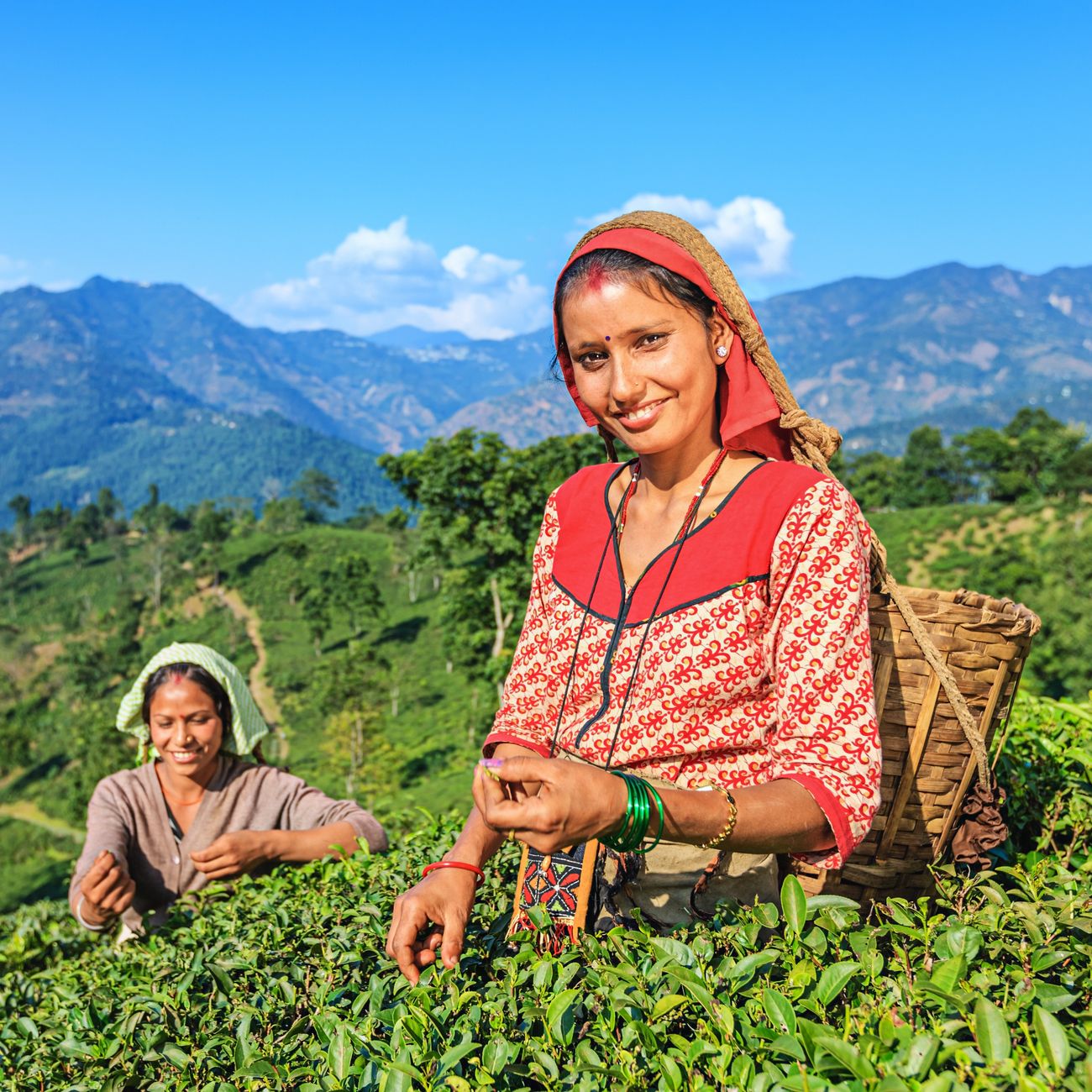
Tea picking is labor intensive and is often done by women in India. Here they pluck the young tea leaves on an estate in Darjeeling, one of India’s famous tea plantation regions – Photo by Bartosz Hadyniak
Traditional Indian spices
Indian spices have been famous throughout the world since time immemorial. They give Indian food the unique flavor and mouth-watering aroma. Visit any grocer and you’ll be spoiled for choice. Just remember that not all spices are branded and prepacked. The shopkeeper will often simply weigh and pack them for you. If you are skeptical about the quality, ask for a sample and smell the product. If it gives off a distinct aroma, it’s good enough.

A carpet weaver sits in front of his handloom in a street in Jaipur. Carpet and rug weaving is one of the oldest industries in India – Photo by costas anton dumitrescu
Nothing can adorn your living room like an Indian carpet
You’ll find that beautiful and bright colored carpets are plentiful when you set out on your shopping expedition. Carpets can be quite expensive and come in various sizes. Of course, the bigger ones are most expensive. The material used and the number of knots also influence the price tag. Carpets can be made of cotton and even silk. However, this does not mean that you must settle for the price that the seller quotes. There’s going to be plenty of room for bargain. Also, carpets tend to be bulky and you don’t want to carry it around. So, the best option is to get it delivered to your home back in your country by using FedEx or DHL. Please clarify whether the seller charges extra for shipping. Normally, when it comes to heavy products, shipping charges are included in the price but ensure that you clarify this at the time of payment.
Take Indian snacks home to relish the flavors again
If you’ve fallen in love with some of the sweets or snacks that are specific to India, you should take some home. There are different brands throughout India that sell packed traditional snacks and sweets that last for a couple of months. Some snacks can be fried once you are back home. Consider Rasgullas, gulab jamoons, Sandesh, Pedha, papad, chutney, spiced pickles, and Indian cookies. If you are constrained by space, veer towards dry varieties.

Gypsy or Roma ladies in colorful traditional dress sell their jewelry at Fort Jaisalmer. Linguistic and genetic evidence suggest that the Roma originated in the northern regions of the Indian subcontinent – Photo by aluxum
Mingle with the Artisans in Smaller Towns for Unique Traditional Souvenirs
You are sure to visit smaller towns and villages that are teeming with artisans during your exploration of India. This is the time to mingle with them so that you can request a piece of custom-made jewelry or pottery. You can sit down with the artist and together the two of you can come up with a design for something unique. Nothing will remind you more of India than such souvenirs.

People visit the Pacific Shopping Mall in New Delhi -Photo by TK Kurukawa
Don’t Buy Souvenirs Simply for the Sake of Buying
Take interest in what you buy. A T-shirt with a print that says “I love India” is hardly a souvenir. Take time to explore what the markets and emporiums have to offer. Remember, the shopkeeper might simply try to sell you what he thinks you fancy. You don’t have to oblige. Buy according to your own tastes and standards so that you don’t regret your purchase later.

A goldsmith sits in his workshop in Jaipur where he makes traditional gold jewelry. Previously gold jewelry was reserved for special occasions like weddings and childbirth but these days it has become very popular and women often have their gold jewelry redesigned – Photo by Kalcutta
Discounts Aren’t Everything
Shopping in India could be your once-in-a-lifetime opportunity, so don’t just chase discounts. Rather look for quality, so that your souvenir brings back fond memories of your visit to India once you are home. What use is a cheap piece of jewelry if it’s not going to last until you reach the airport.
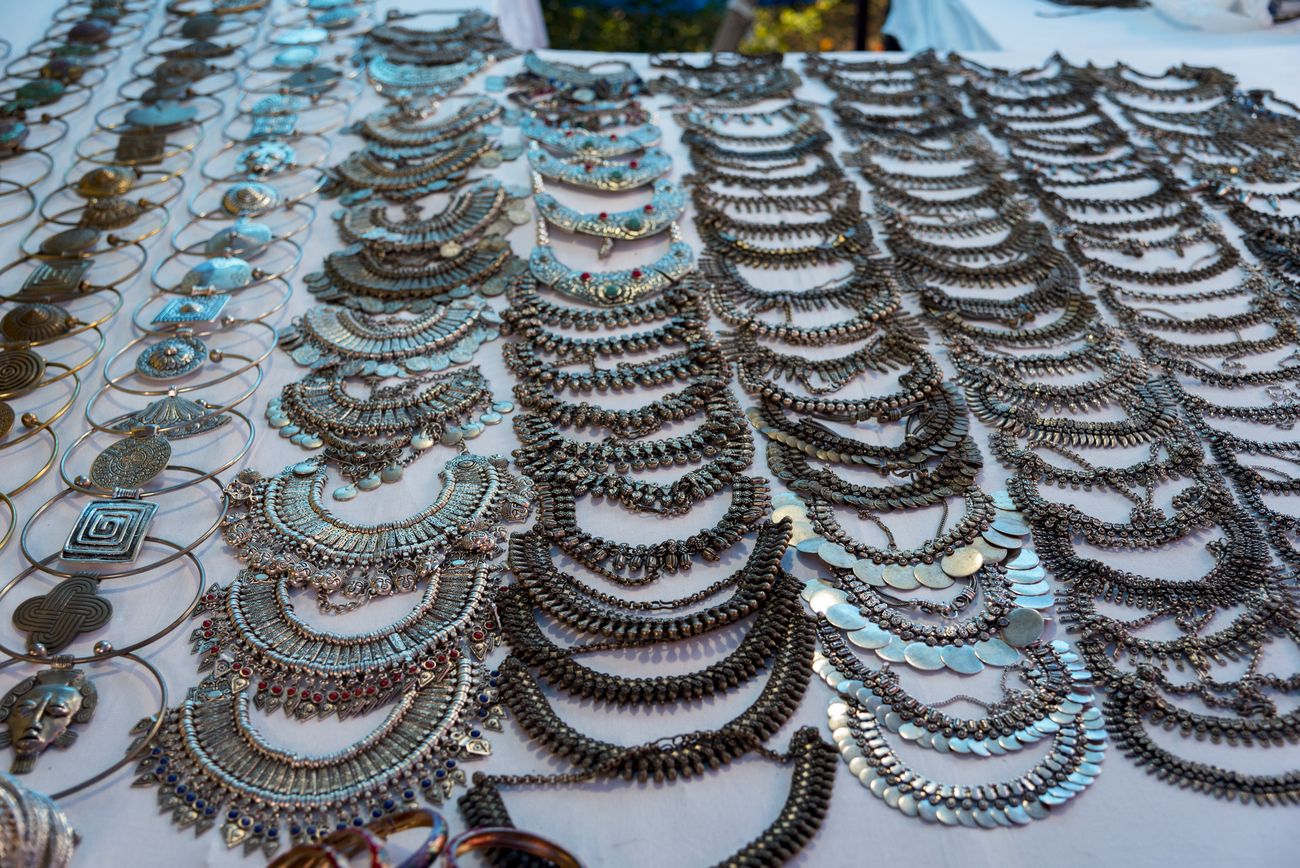
A collection of handcrafted jewelry on sale in a New Delhi shop. India has a huge variety of handicrafts which vary from region to region and usually have their roots in the empires which ruled these areas in ancient times – Photo by clicksabhi
The Final Word
Shopping is not a rushed affair in India, so take your time and browse around until you find something that you fall in love with. Listen to the advice of your guide, driver or our representative to make this endeavor an enjoyable one. Venture into the markets with an open mind, zero skepticism and a will to make the most of your shopping adventure.
Disclaimer: Neither the Company, nor any of our representatives including guides, staff members, drivers and handling agents can be held responsible for any of the purchases you make while on tour. Therefore, the Company recommends its clients to practice due diligence, common sense and rationality while purchasing or shopping during their India trip or other Asian countries trip. For more information Read Clause 15.10 in Tour Booking Terms & Conditions

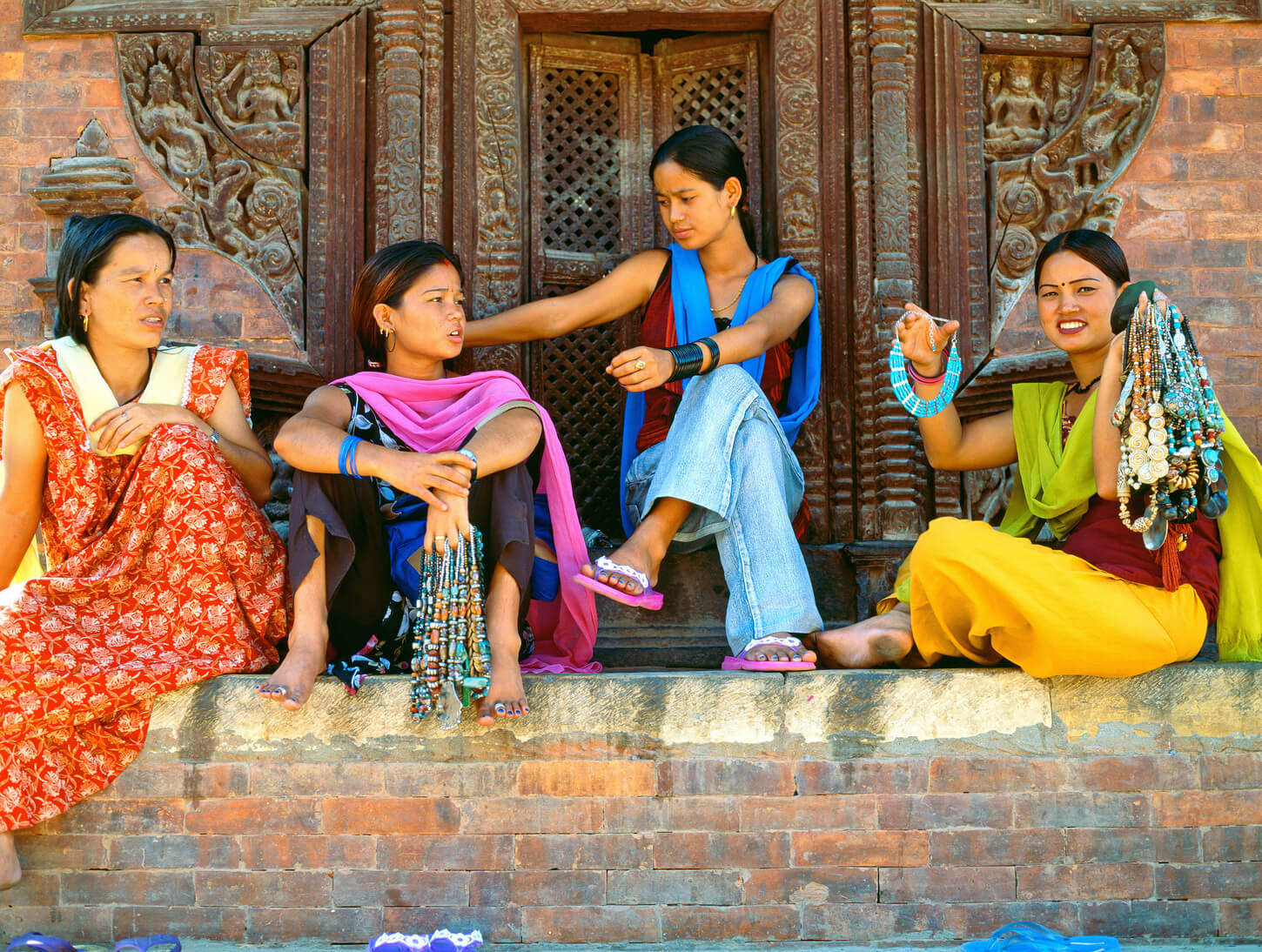

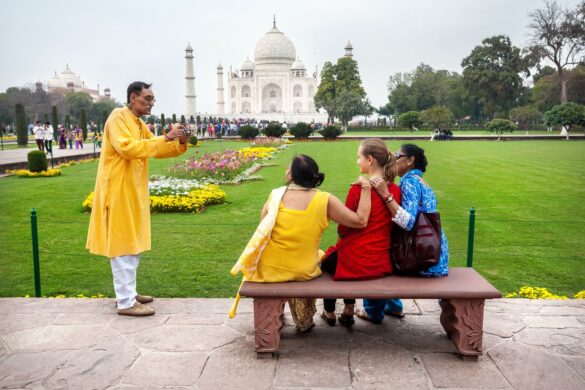
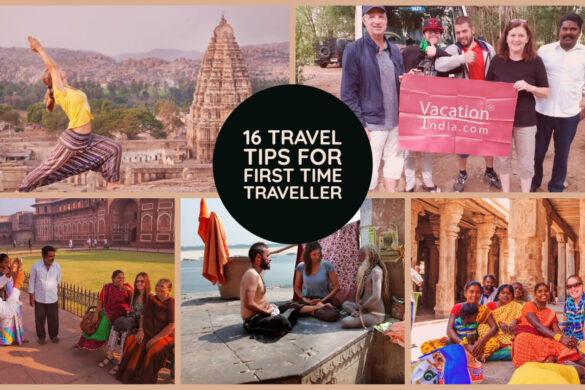




![Golden Triangle Tour with Goa [Culture + Beach Vacation] (12 days) Golden Triangle Tour with Goa [Culture + Beach Vacation] (12 days)](https://www.vacationindia.com/wp-content/uploads/2022/06/golden-triangle-tour-with-beach-vacation-270x160.jpg)


















